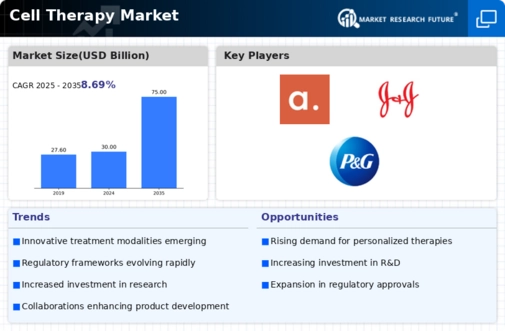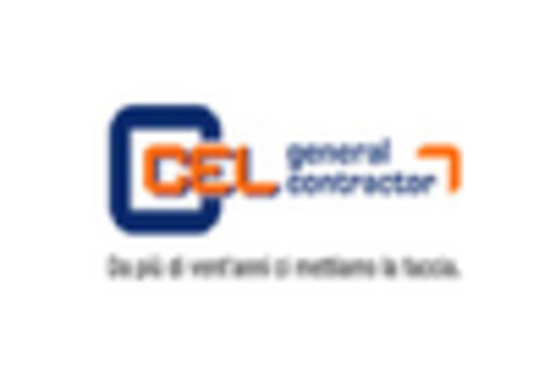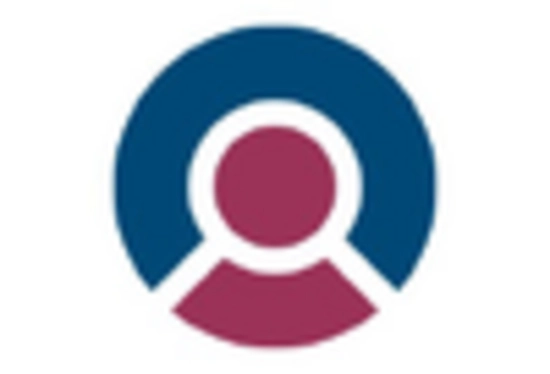Rising Prevalence of Chronic Diseases
The increasing incidence of chronic diseases such as cancer, diabetes, and cardiovascular disorders is a primary driver of the Cell Therapy Market. As these conditions become more prevalent, the demand for innovative treatment options rises. Cell therapies, which offer the potential for regenerative healing and targeted treatment, are gaining traction among healthcare providers and patients alike. According to recent estimates, the global burden of chronic diseases is expected to reach unprecedented levels, necessitating advanced therapeutic solutions. This trend is likely to propel investments in research and development within the Cell Therapy Market, as stakeholders seek to address the growing healthcare challenges associated with chronic illnesses.
Advancements in Cell Processing Technologies
Technological innovations in cell processing and manufacturing are significantly influencing the Cell Therapy Market. Enhanced techniques for cell isolation, expansion, and modification are improving the efficiency and efficacy of cell therapies. For instance, automated cell processing systems are streamlining production, reducing costs, and minimizing contamination risks. The market for cell processing technologies is projected to grow substantially, with estimates suggesting a compound annual growth rate of over 20 percent in the coming years. These advancements not only facilitate the development of new therapies but also enhance the scalability of existing treatments, thereby expanding the reach of the Cell Therapy Market.
Increased Investment in Regenerative Medicine
The surge in investment directed towards regenerative medicine is a notable driver of the Cell Therapy Market. Venture capital firms and pharmaceutical companies are increasingly recognizing the potential of cell therapies to revolutionize treatment paradigms. Reports indicate that funding for regenerative medicine startups has reached billions of dollars, reflecting a robust interest in innovative therapeutic solutions. This influx of capital is likely to accelerate research initiatives, clinical trials, and product development within the Cell Therapy Market. As more therapies receive regulatory approval, the market is expected to expand, offering new opportunities for stakeholders across the healthcare spectrum.
Growing Awareness and Acceptance of Cell Therapies
Public awareness and acceptance of cell therapies are steadily increasing, contributing to the growth of the Cell Therapy Market. Educational campaigns and successful case studies are helping to demystify these advanced treatments, fostering a more informed patient population. As patients become more aware of the potential benefits of cell therapies, demand is likely to rise. Furthermore, healthcare providers are increasingly advocating for these innovative solutions, recognizing their potential to improve patient outcomes. This shift in perception is expected to drive market growth, as more individuals seek out cell therapy options for their medical conditions.
Regulatory Support and Streamlined Approval Processes
Regulatory bodies are increasingly providing support for the development and commercialization of cell therapies, which is a crucial driver of the Cell Therapy Market. Initiatives aimed at streamlining approval processes for innovative therapies are being implemented, allowing for faster access to life-saving treatments. For example, the introduction of expedited pathways for regenerative medicine products is encouraging companies to invest in cell therapy research. This regulatory environment not only fosters innovation but also enhances market confidence, as stakeholders perceive a more favorable landscape for bringing new therapies to market. As regulatory frameworks continue to evolve, the Cell Therapy Market is poised for significant growth.

















Leave a Comment